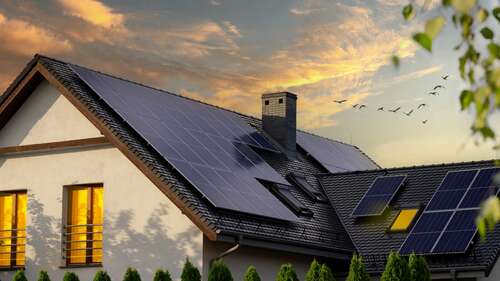
Your home’s electricity bill shows the monthly power consumption represented in kWh or the number of kilowatts used every hour. A kilowatt is 1,000 watts (W), or the more common representation of the amount of energy a home appliance may use. For example, a refrigerator that uses 167 W over one hour will use approximately 4 kWh daily.
To determine how many solar panels you need, you’ll need your annual kWh usage, which you can find by adding up your monthly kWh for January through December from your electricity bill. Alternatively, you can use the NREL PVWatts calculator, which offers a close estimate by looking at several advanced factors.
You’ll also need the production ratio of your region or the amount of electricity produced by solar panels under common weather conditions near your address. Thankfully, there isn’t much of a fluctuation throughout the United States and you can use the following maximum production ratios from clean energy provider EnergySage:
- Northeast: 1.3
- Pacific Northwest: 1.15
- Southwest: 1.8
- Mid-Atlantic: 1.35
- Southeast: 1.5
- Mountain West: 1.6
- West Coast: 1.8
- Midwest: 1.3
Finally, you’ll need the solar panel’s wattage. Divide the annual total wattage needed by the production ratio and then divide that by the wattage of your panels. For this example, let’s go with the average of 400 watts per panel. Using an address in Las Vegas as an example, you’ll divide 7,157 kWh by 1.8 by 400 W to get approximately 10 panels.

